We left Wrangell late last Thursday afternoon and got as far as Thoms Place before dark (about 23nm from Wrangell). We dropped some crab traps on the way in and picked them back up on the way out in the morning (with three keeper crabs inside!) The forecast was showing a pretty big blow on Friday and Saturday (gusts to about 40kts in some places), so we needed a good secure anchorage for probably two nights. Vixen Harbor seemed like it would be a great spot to hole up. We’ve visited and written about Vixen Harbor before (here and here) — it’s the one with the tricky and inaccurately charted entrance.
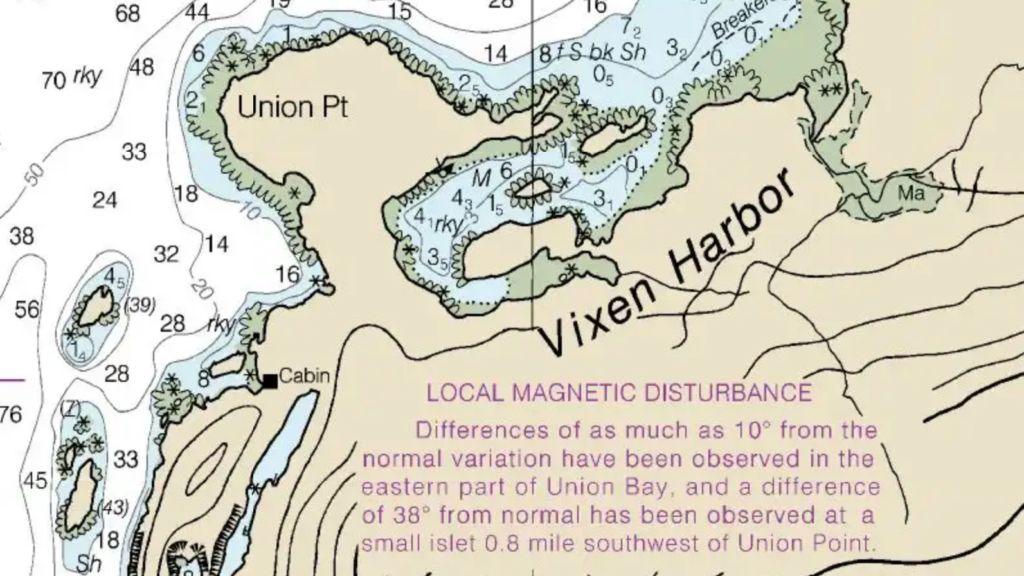
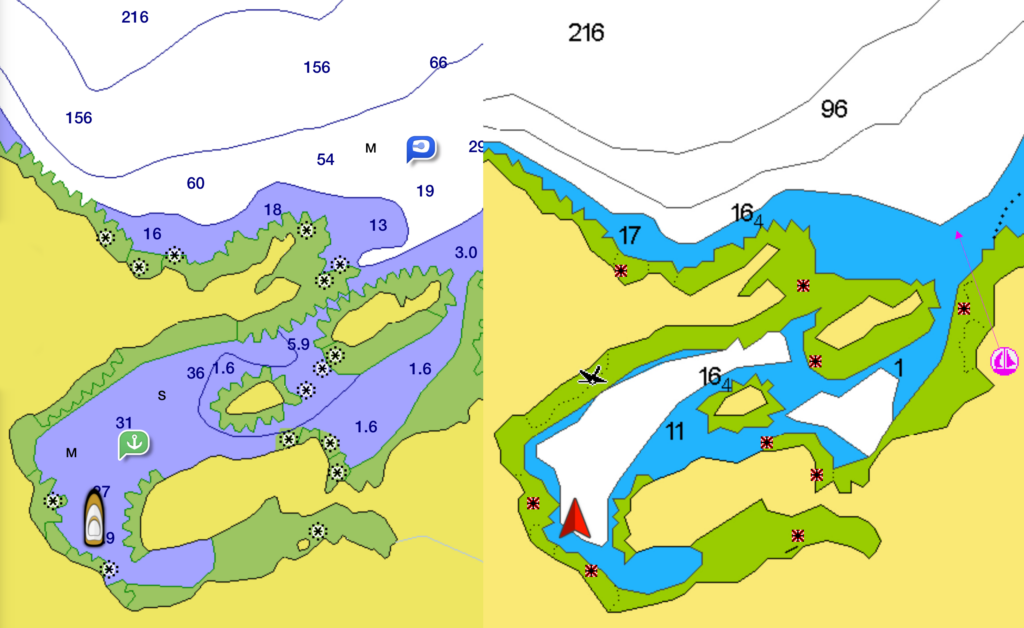
We go into detail about the challenges of this anchorage in the two referenced posts above, but it’s a fun challenge and a quiet, scenic anchorage. We left Thoms Place early and were anchored in Vixen Harbor by 10:00 a.m.
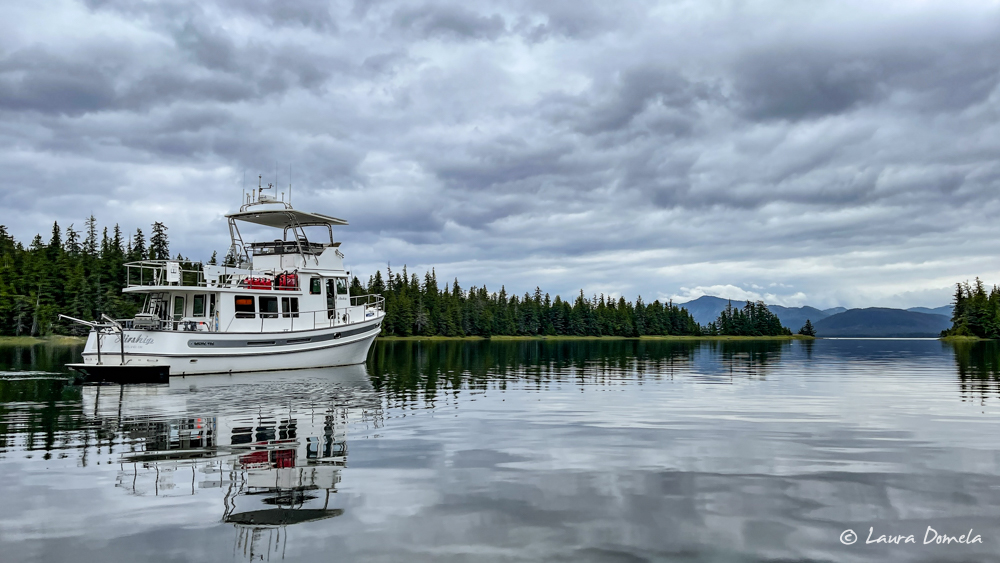
We put our crab traps out again, and then explored the harbor by dinghy while it wasn’t raining. The sky was gray and it rained off an on during most of our visit.
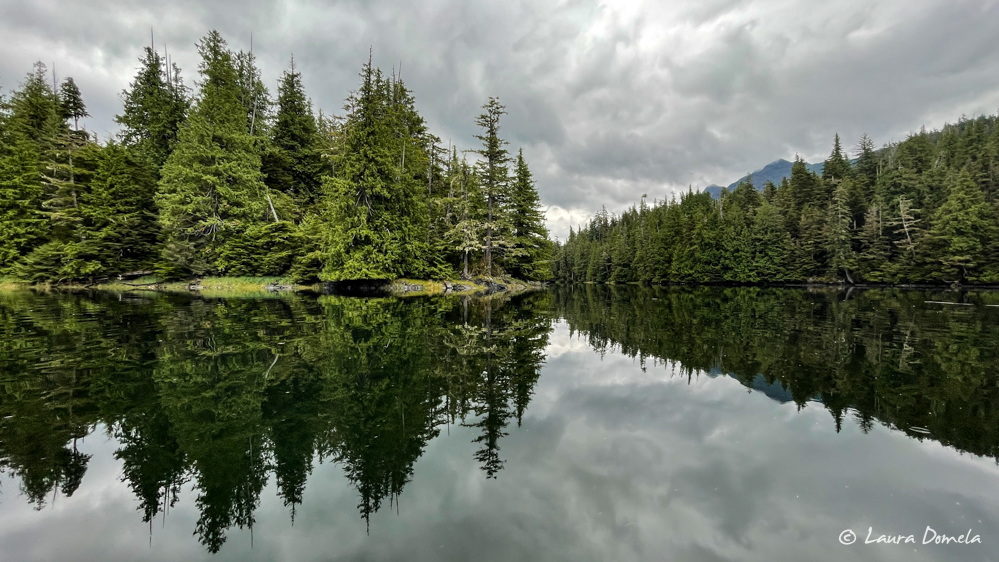
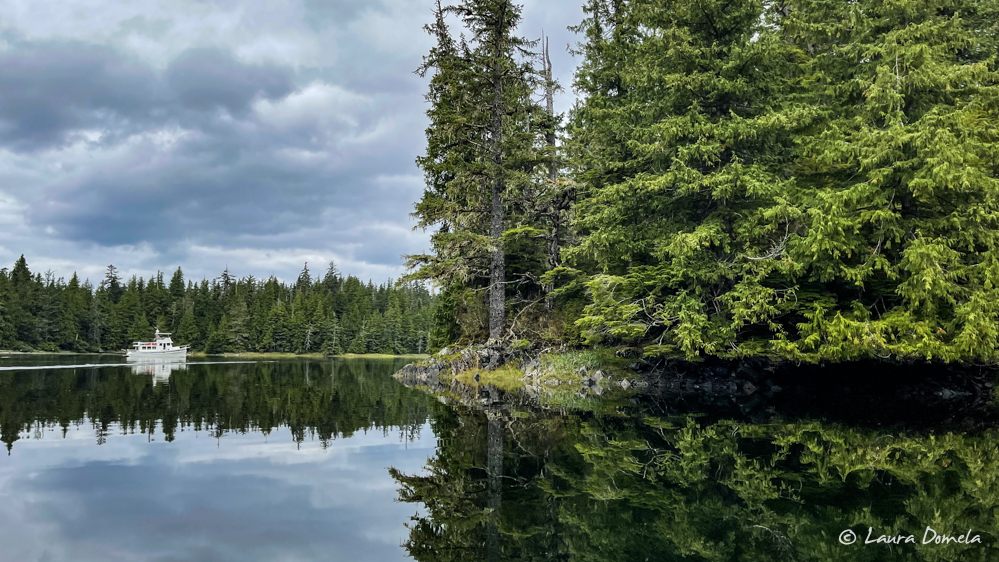
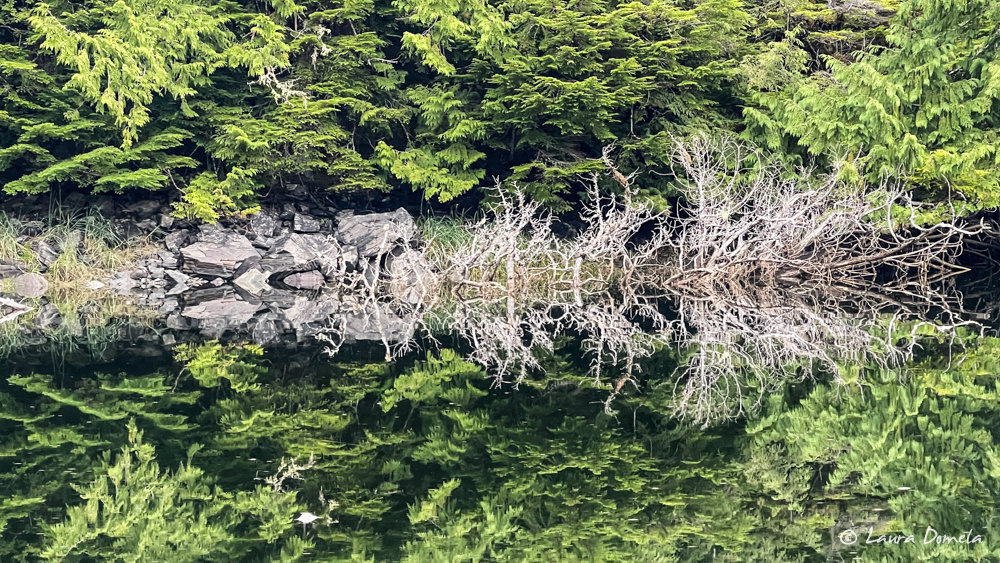
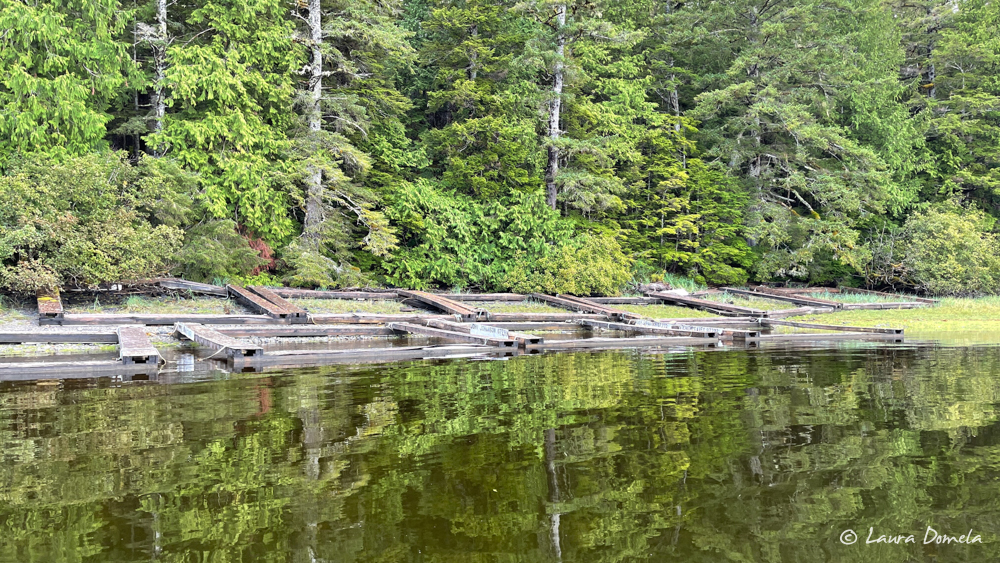
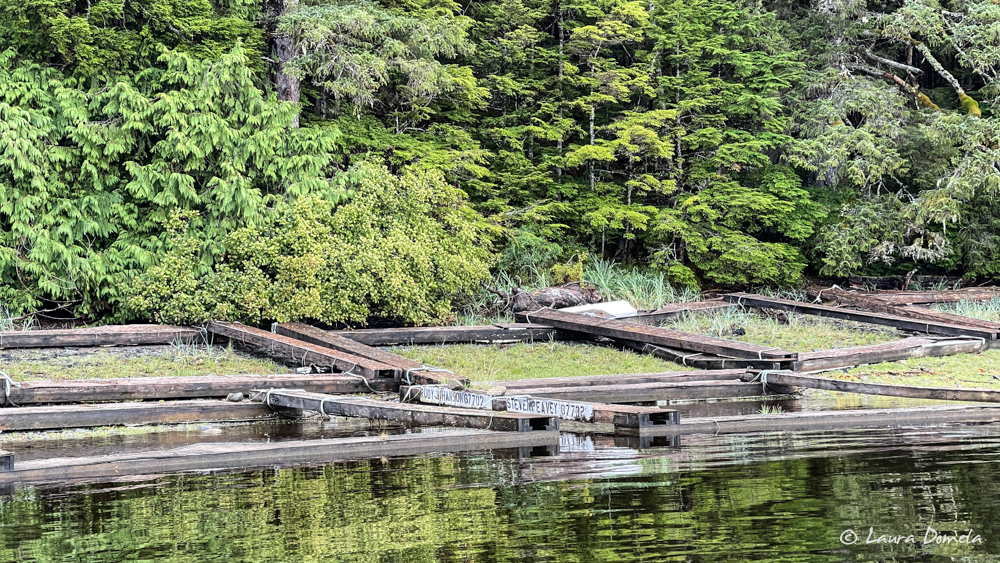
The weather called for a cozy dinner, so I made some tomato soup and some small open faced crab melts with our crab from Thoms Place.

Friday night was the most intense test of our Ultra anchor yet! We actually had a few gusts of 55kts, and a whole lot of time with 30-40kt winds. The anchor held wonderfully, our little arc on the anchor-watch app was perfect, but the noise of the wind, the heavy rain, and the anchor bridle rubbing on the cleats every time we arced back or forth definitely did not make for a good night’s sleep.
In the morning, the clouds and low fog burned off and for a while the sun actually came out!
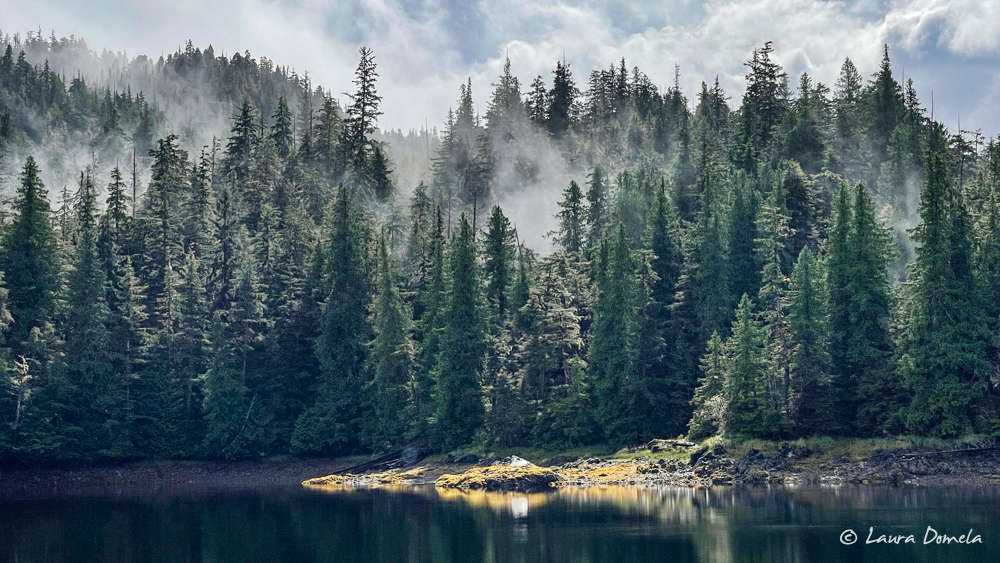
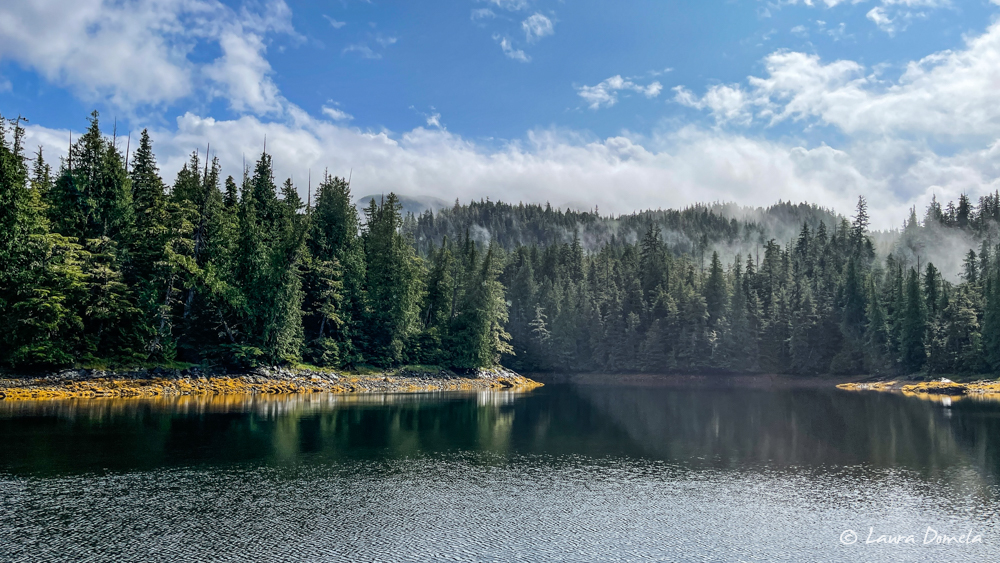
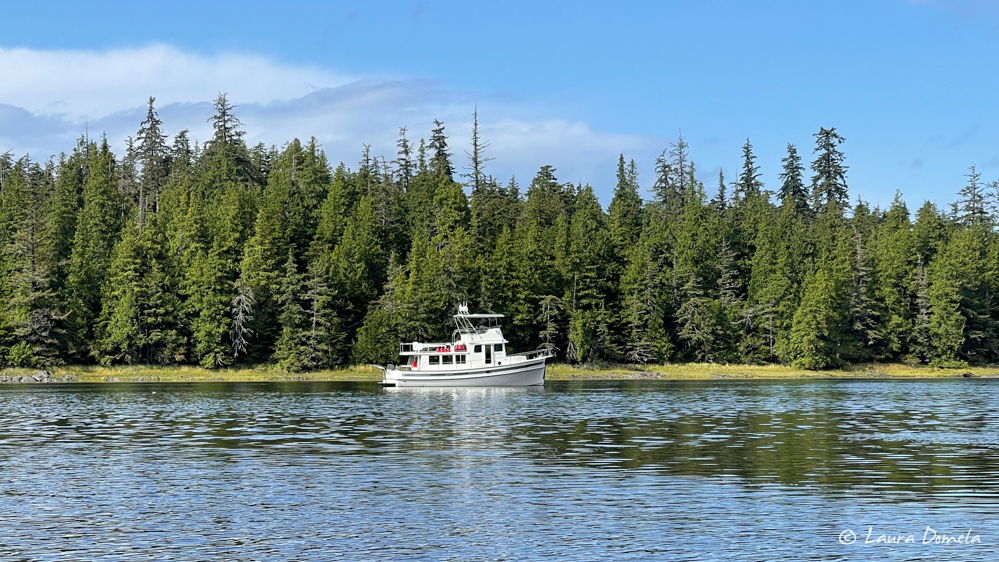
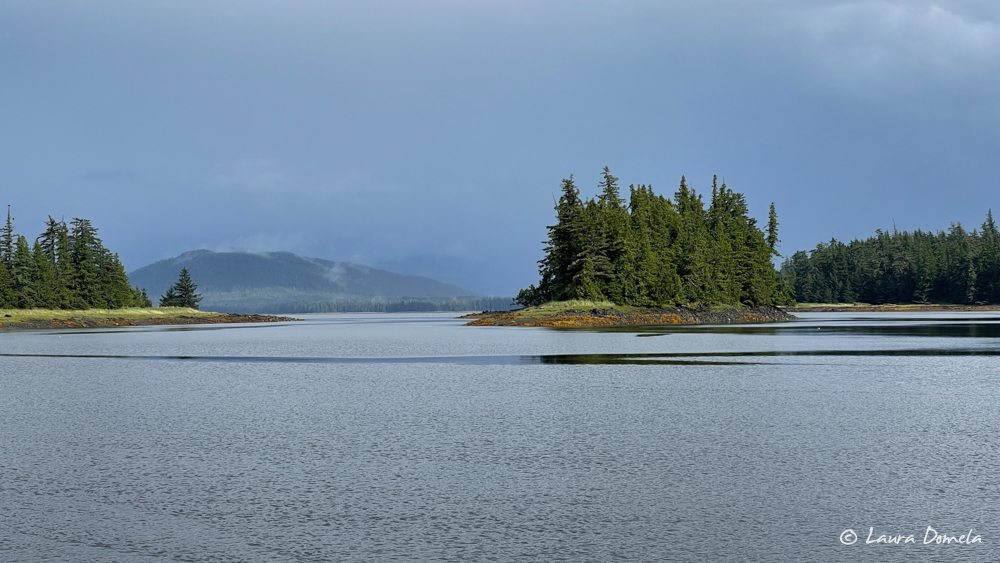
Saturday was still a bit breezy, but not bad at all. Kevin got the drone up for a few aerial pics. (This anchorage feels so much smaller and more intimate than it looks from the air!)
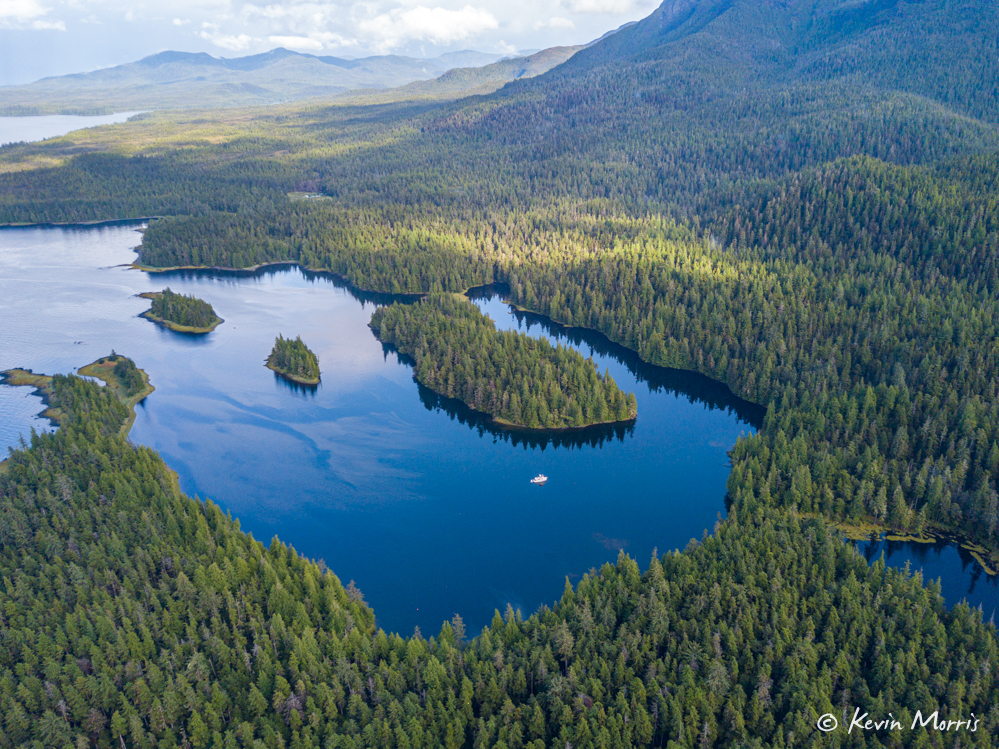
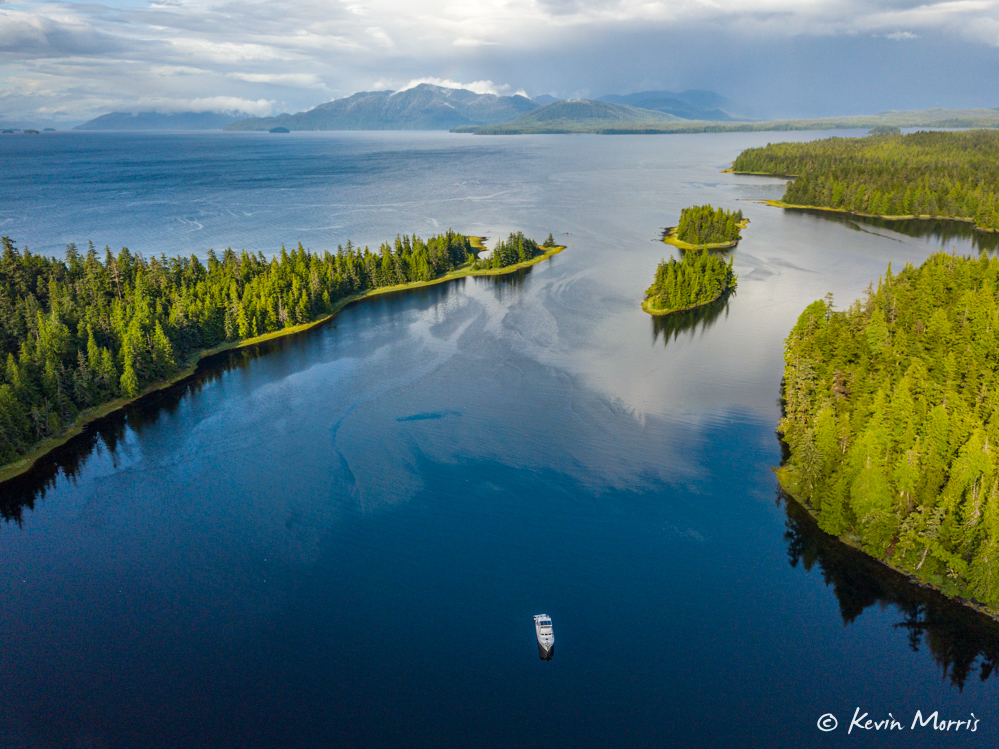
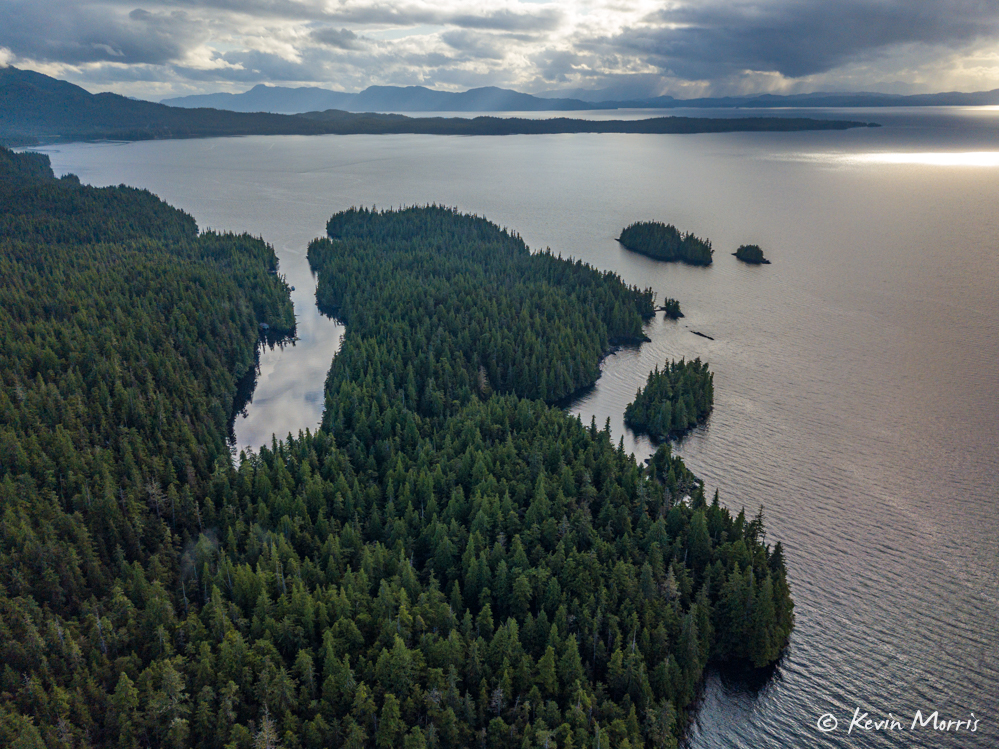
More crab!
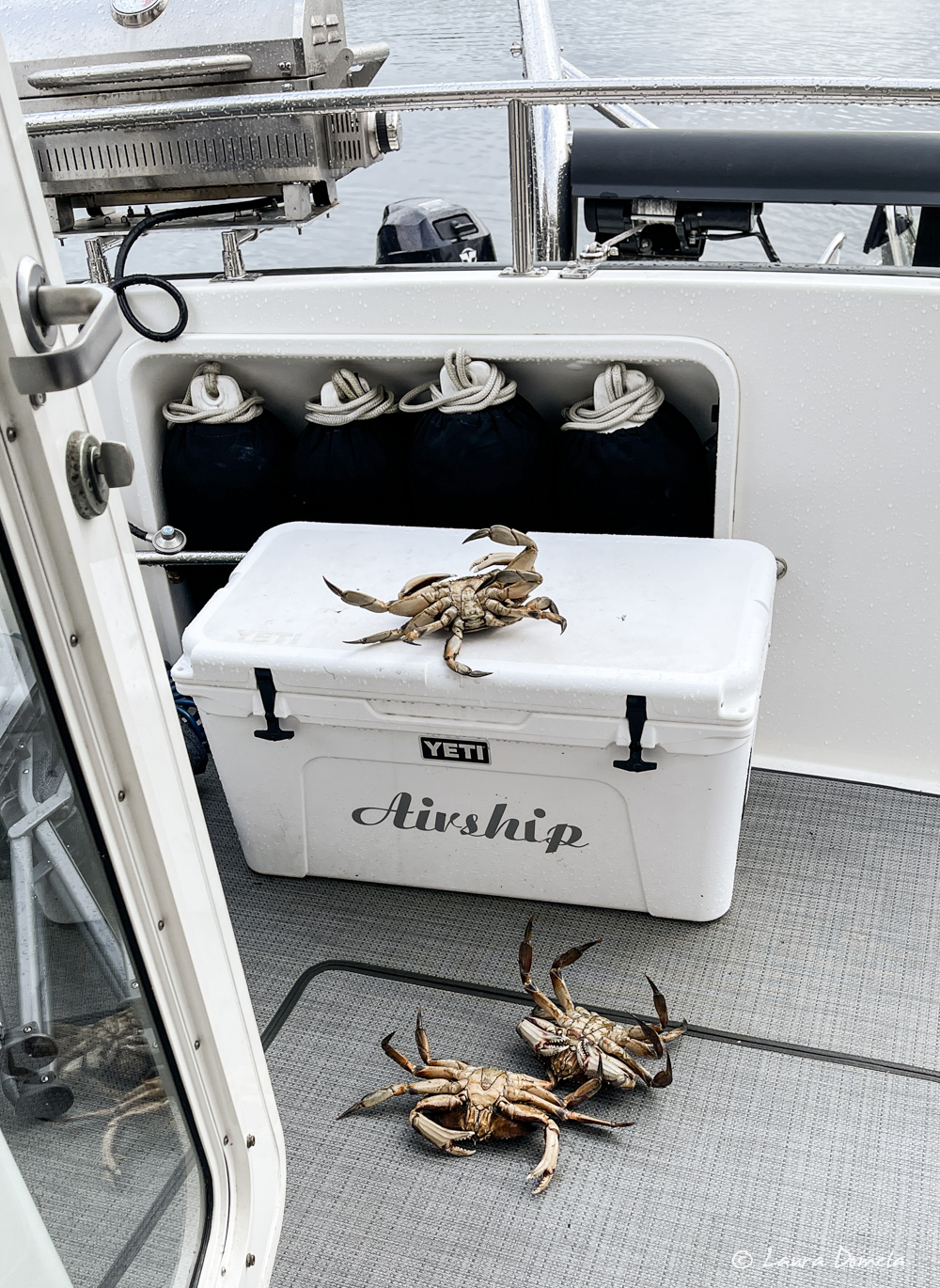
On Sunday morning we pulled our anchor up out of the sticky stinky mud (it came loose! after all that wind!!) and threaded our way out of Vixen Harbor. Here’s what that looks like on our Garmin chart:
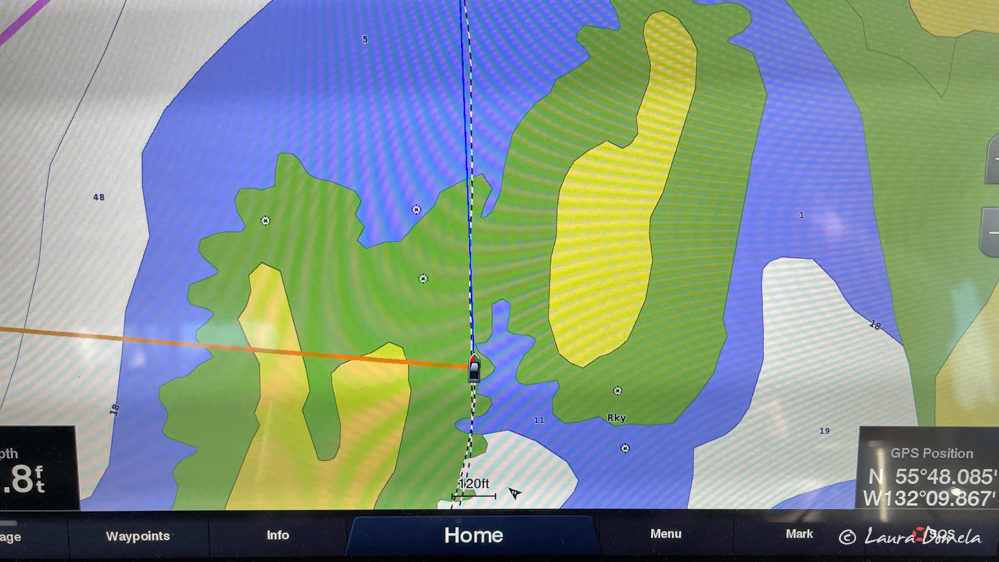
It was a pretty low tide this morning, and the shallowest depth we saw was 16ft at the skinniest part.
Ernest Sound and Clarence Strait were calm, calm, calm.
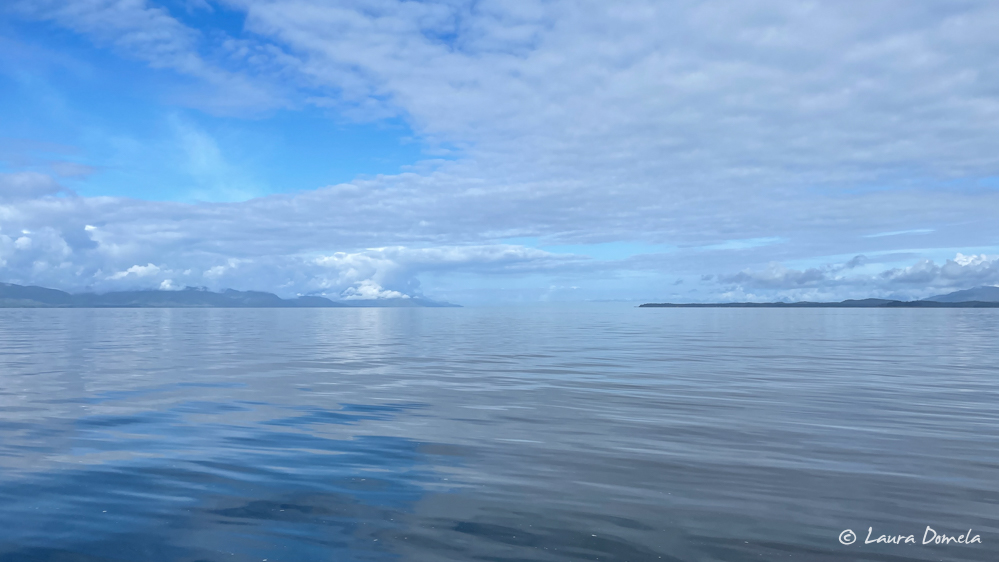
We headed around Cleveland Peninsula and into Helm Bay, where we docked Airship at the little public float.
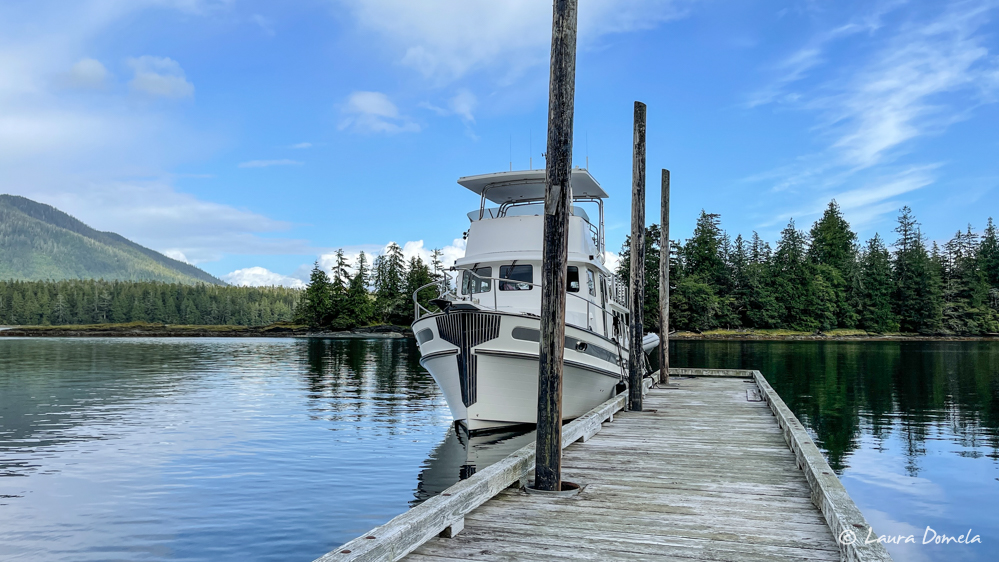
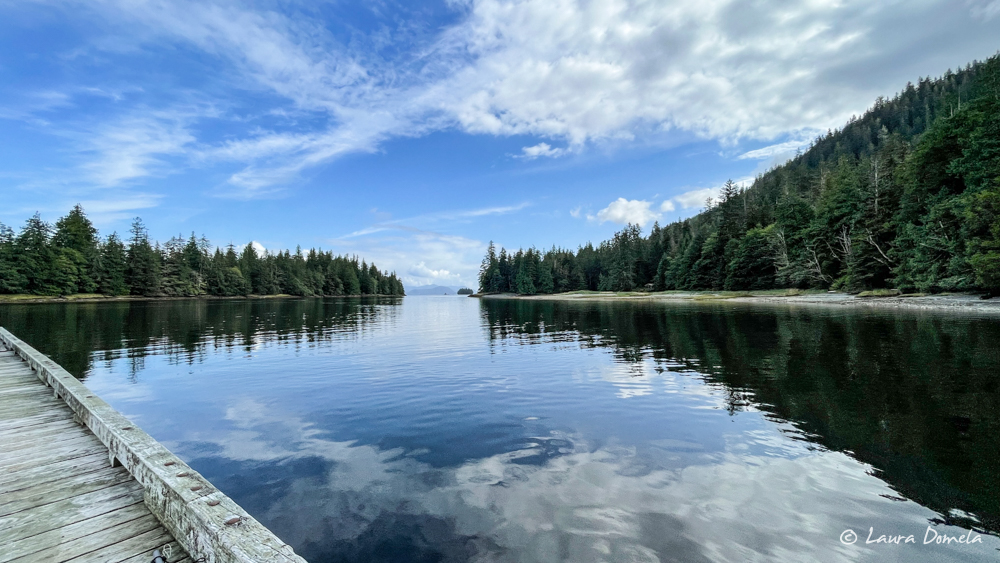
Since we had such a nice bounty of crab, I decided to make another version of the crab wontons I made a couple weeks ago. I folded them into a simple triangle shape and fried them in canola oil. It worked great, and they were delicious!

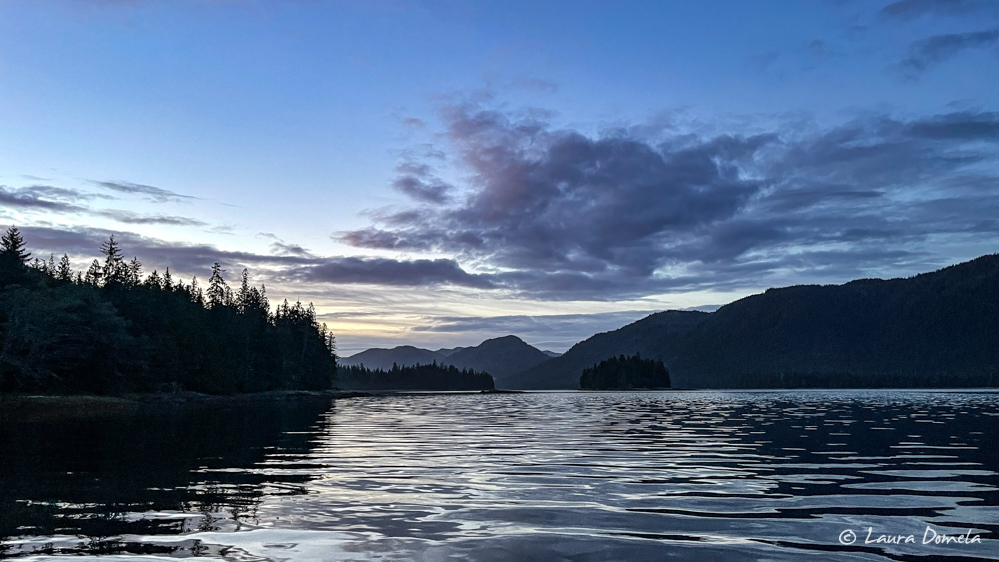
In the morning as I went into the galley for more coffee, I spotted something fuzzy and white over on the island….running through the grass! What the heck? My first thought was dog (I know, weird), but I soon realized, to my total surprise, it was a mountain goat! On the tiny island next to us! The island that is most decidedly NOT mountainy at all.
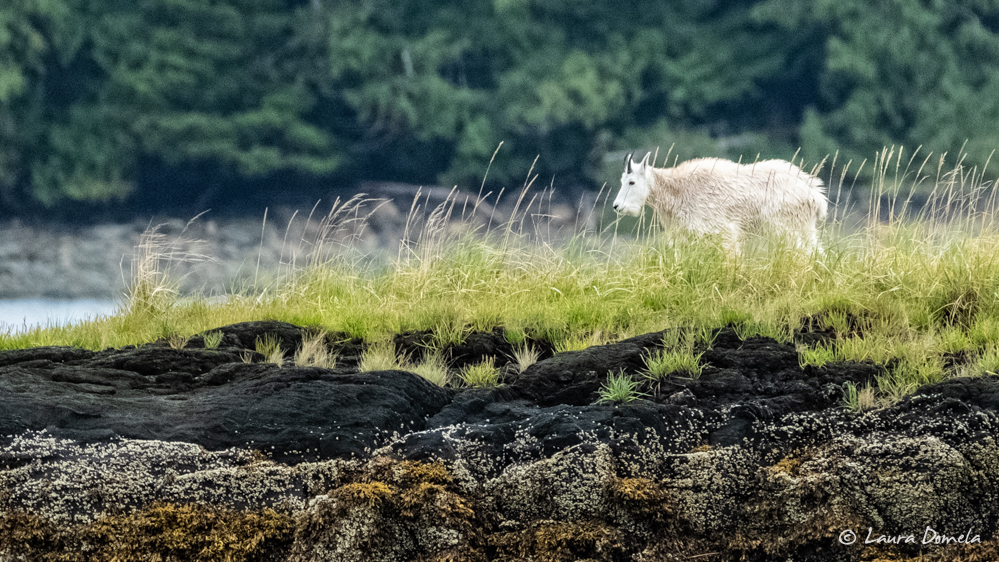
It wandered out onto the north tip and stopped for a few moments looking out into the bay, then wandered down onto the beach for a bit before ducking back into the trees.
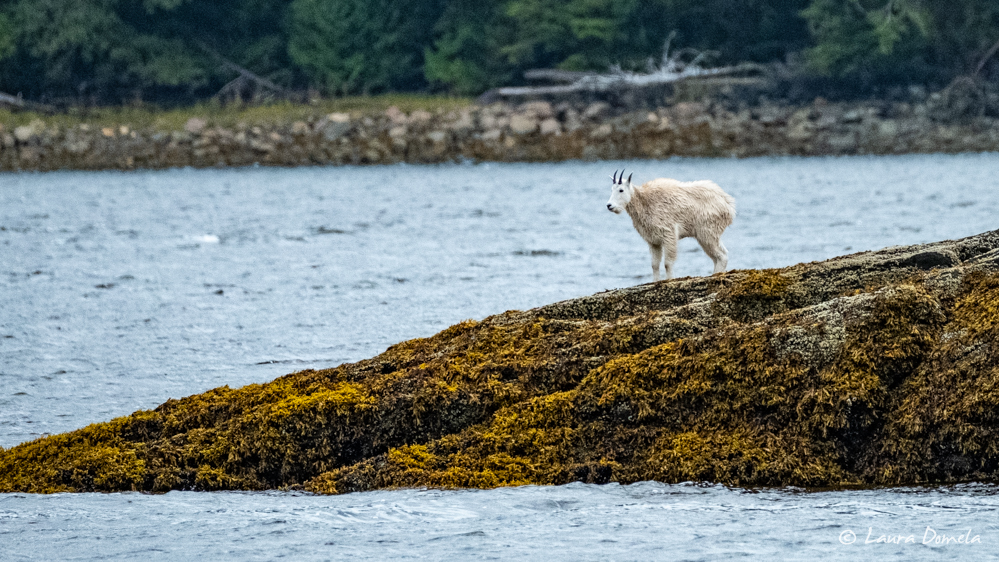
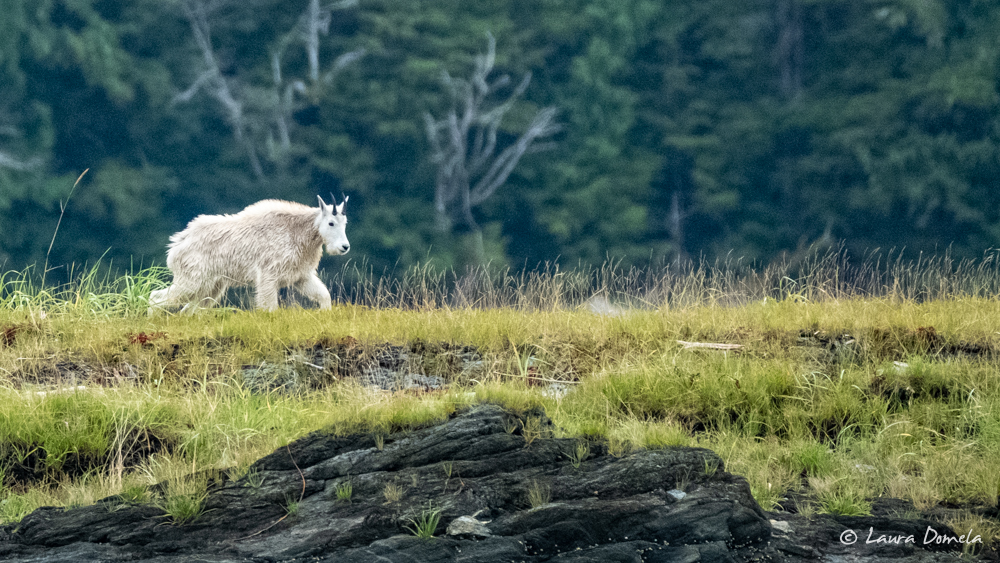
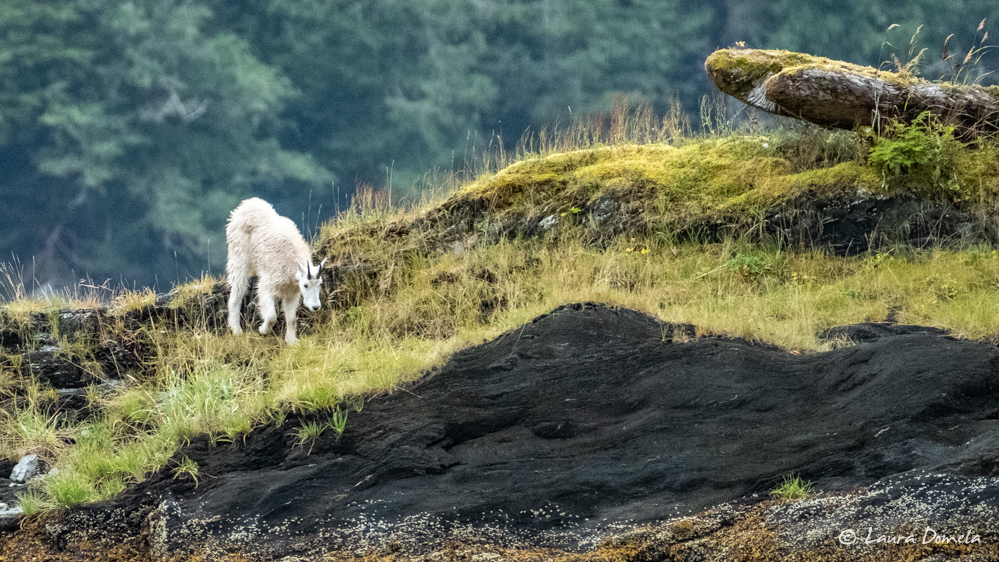
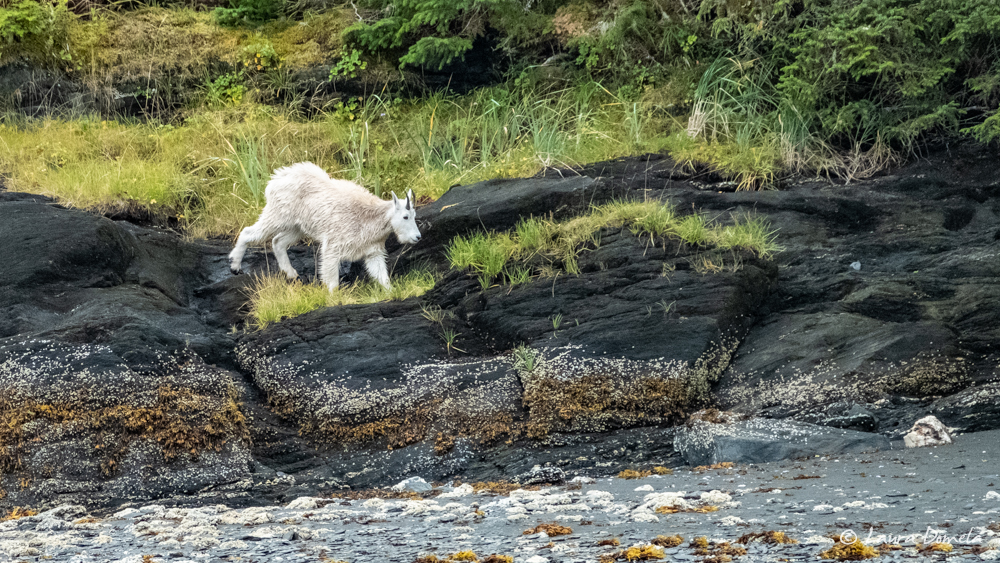
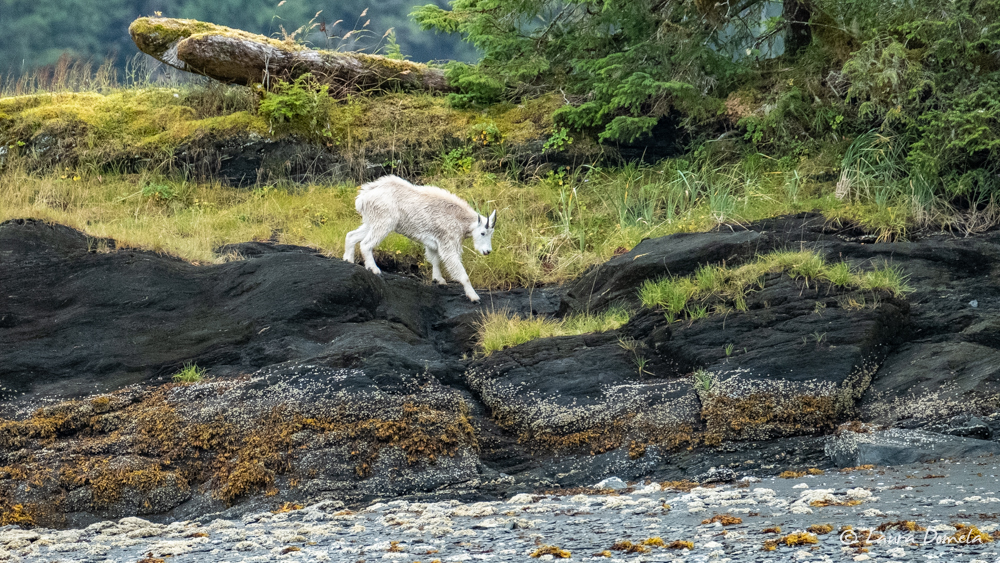

Airship is the red arrow on the chart screenshot below, and the north tip of that little island (called Forss Island) is where we saw the mountain goat. The area between shore and the island appears to be intertidal, and it definitely shallows but we haven’t seen it connected at the low tides we’ve had during our stay here. Goats can certainly swim, but we still wonder what this guy was doing out the island. The kayakers staying in the cabin said they heard wolves howling the other night, so maybe wolves chased it out there? I can’t imagine there’s much to sustain a big mountain goat!
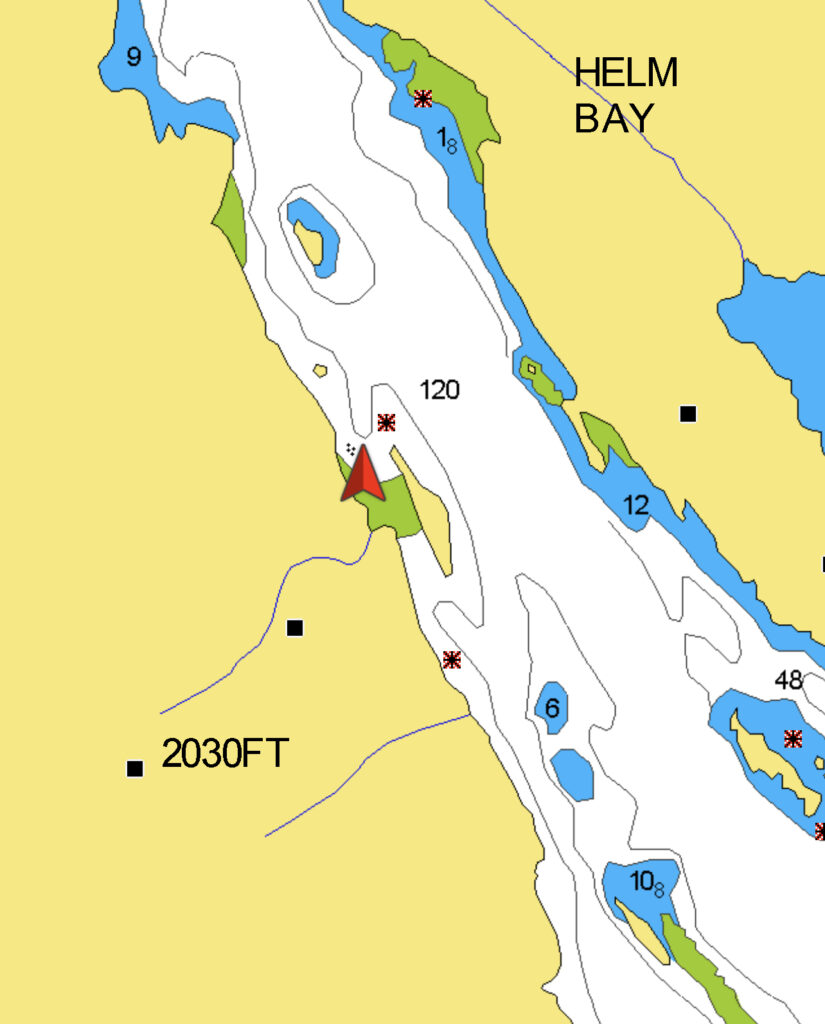
We did find reference to mountain goats on the Cleveland Peninsula referenced by the Alaska Department of Fish and Game here, that says:
The lower Cleveland peninsula, located north of Ketchikan, harbors a small, unique mountain goat population. The population is notable due to the particularly large horns of mountain goats in this population.
…
Overall, the area is comprised of 9 very small patches of alpine habitat separated from the coast range mountains by 20 miles of low elevation, unsuitable mountain goat habitat.
Here’s a map of the Cleveland Peninsula study area (from that same page I linked to above) showing the location where mountain goats were captured and tagged during this research effort, and the purple arrow is where we are, roughly, in Helm Bay.
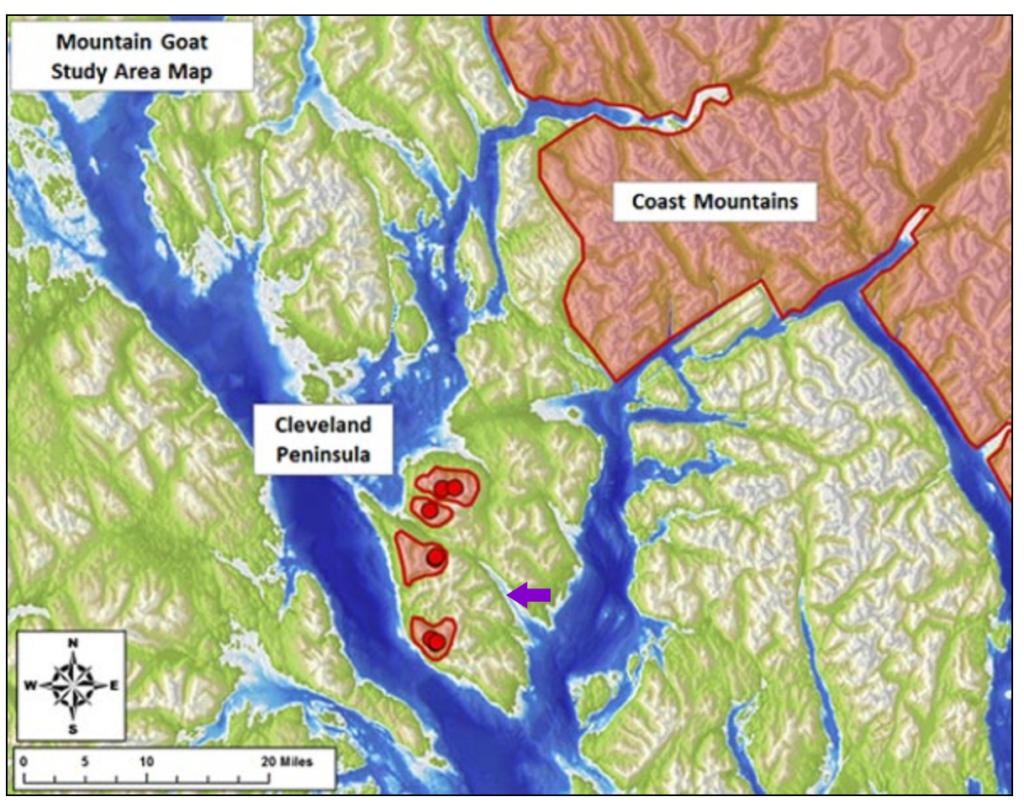
Anyway, it was very cool to see it so close! We dinghy-puttered around island later in the day looking for it, but didn’t spot it again. I went ashore and took a few photos of its hoof prints (should have included my boot for scale!) I decided to send a note to the researchers listed on the Alaska Department of Fish and Game page, telling them about the location of the sighting, and that I had photos, etc., so we’ll see if they respond.
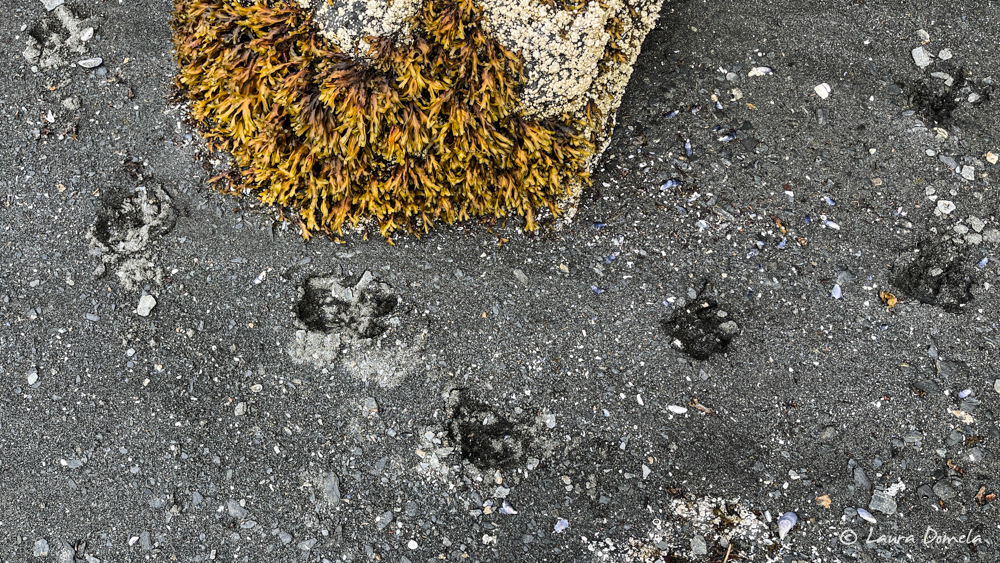
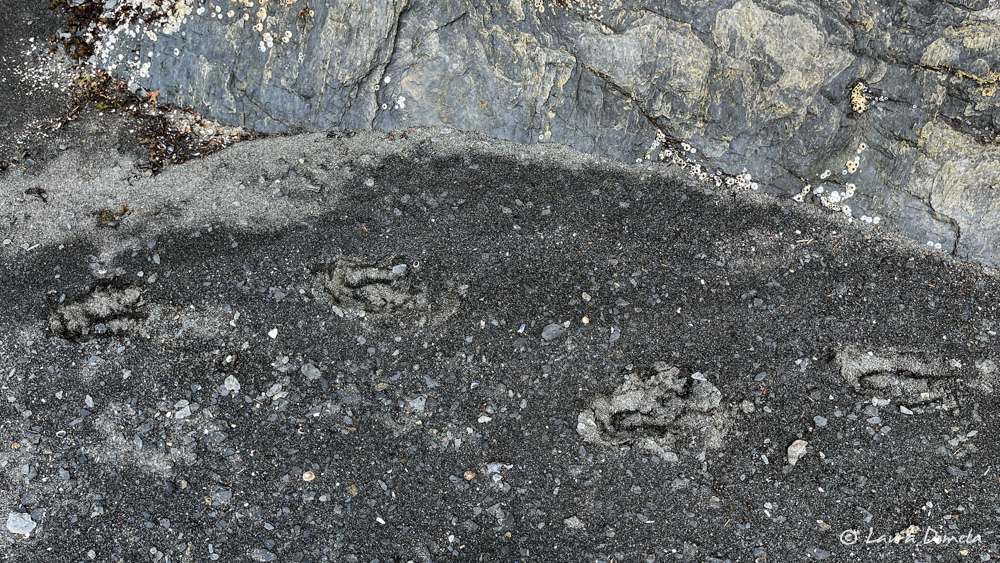
We’ve actually got pretty decent internet connection out here (enough to stream Netflix/HBO/whatever) so we decided to stay three nights and head into Ketchikan on Wednesday (instead of Monday as we’d originally planned).
Yesterday morning I used the last of our Vixen Harbor crab for a little crab Benedict-type thing for brunch (half a toasted english muffin, fresh crab, sautéed spinach, an over-easy egg, hollandaise sauce, chives, and some sliced fresh tomato….super yum!)

The light was so beautiful this morning!
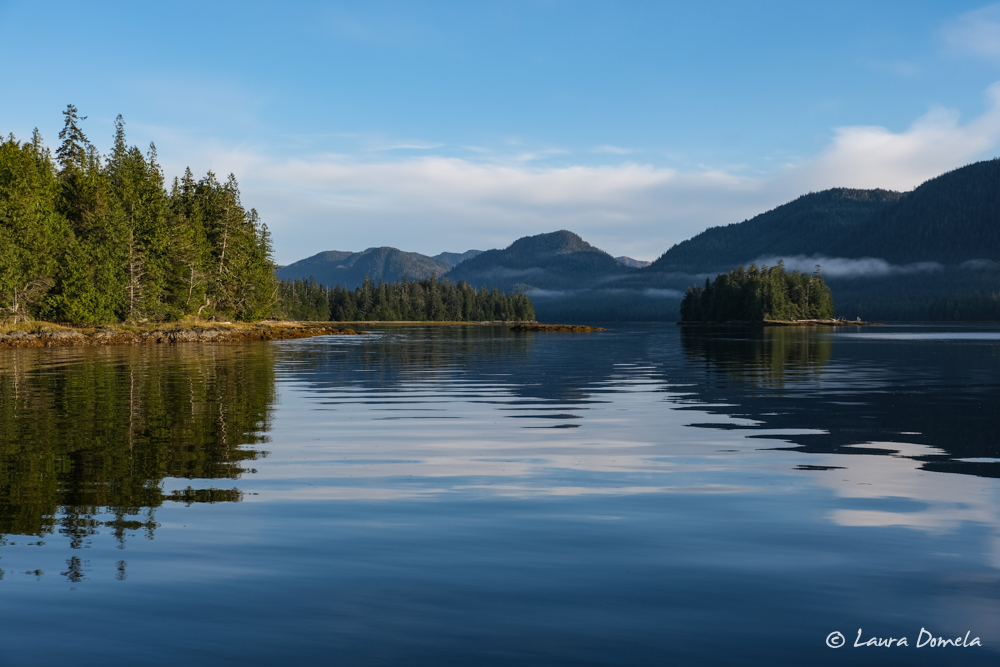
The Forest Service cabin on shore where they kayakers were staying (they left yesterday).
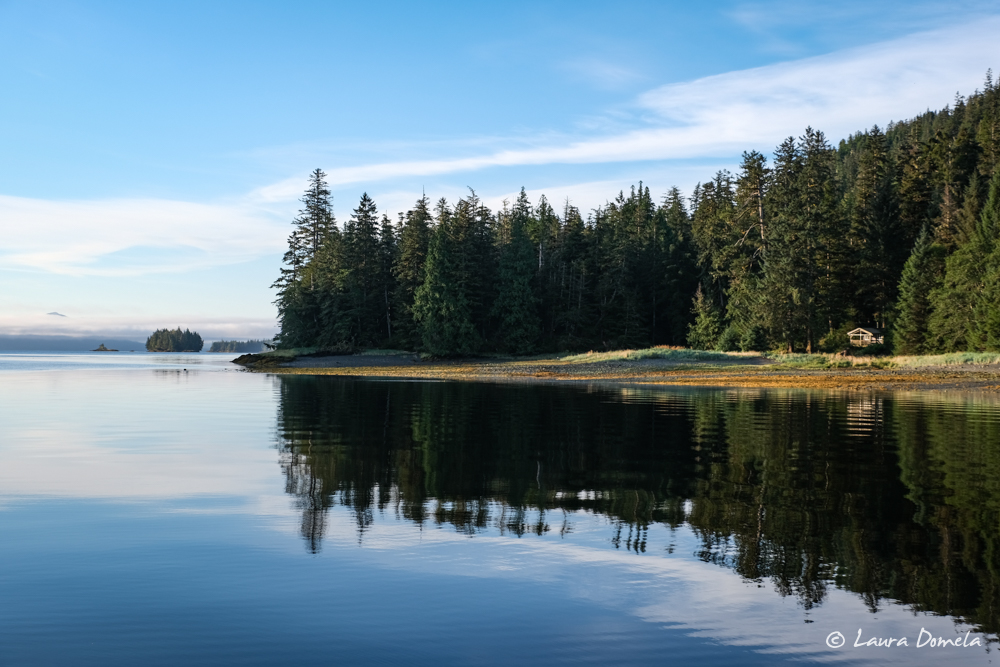
Kevin got some aerials this morning:
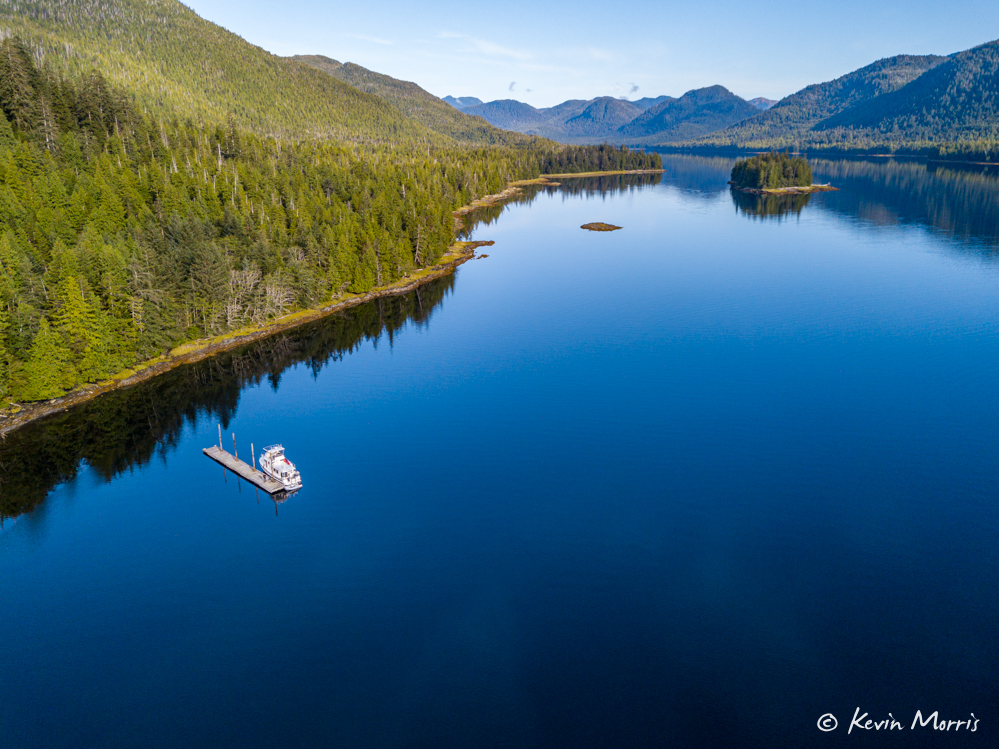
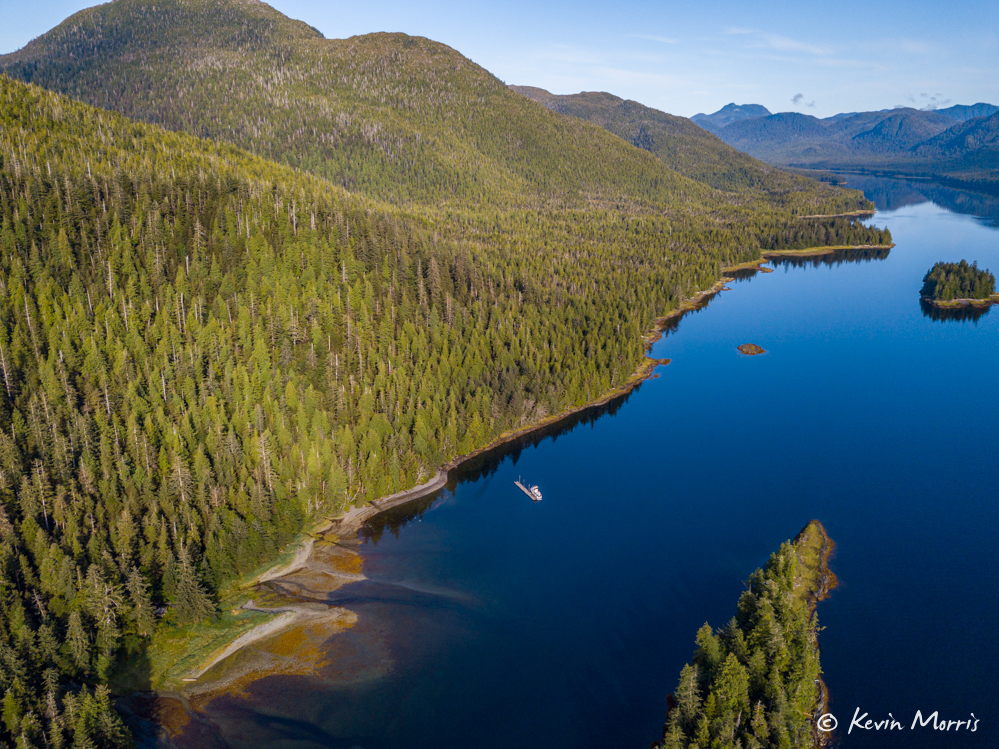
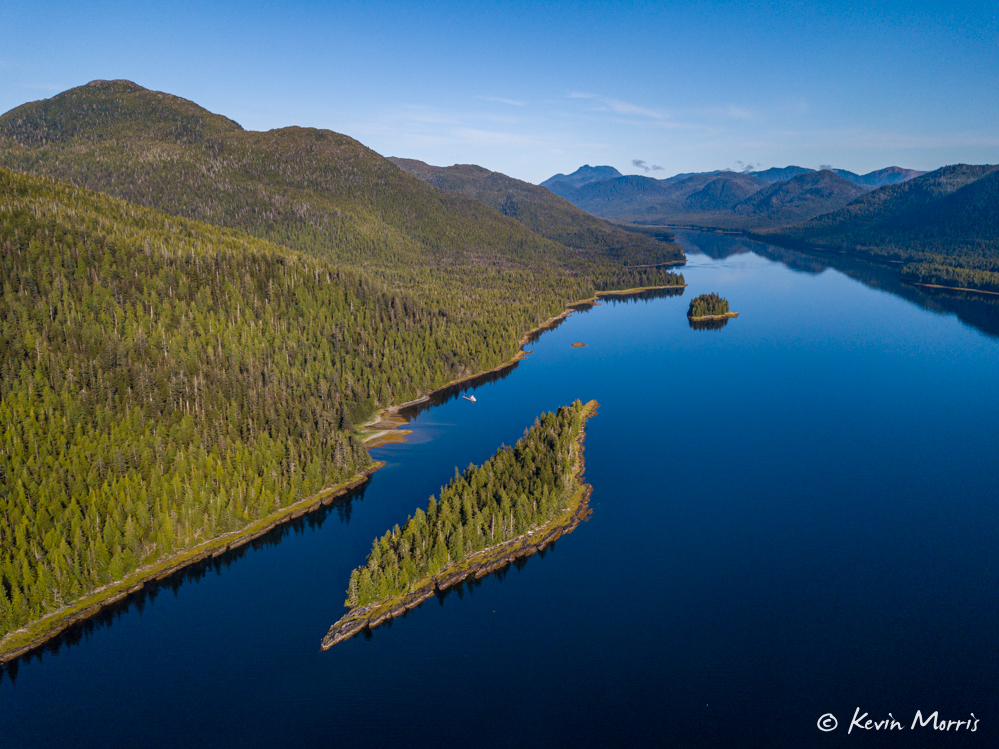
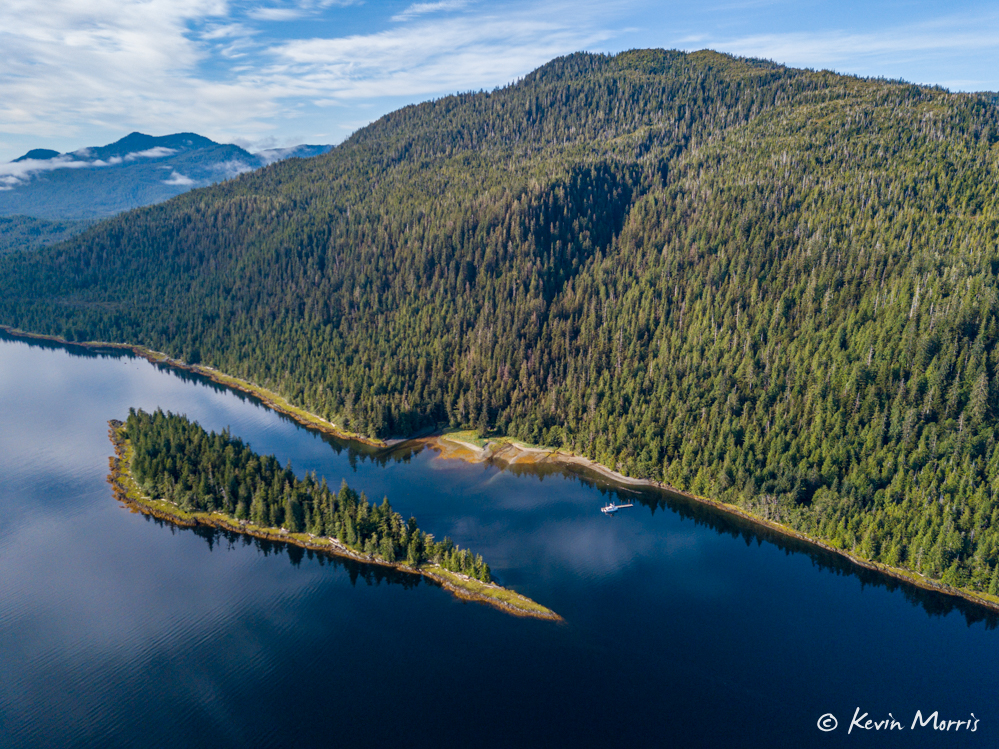
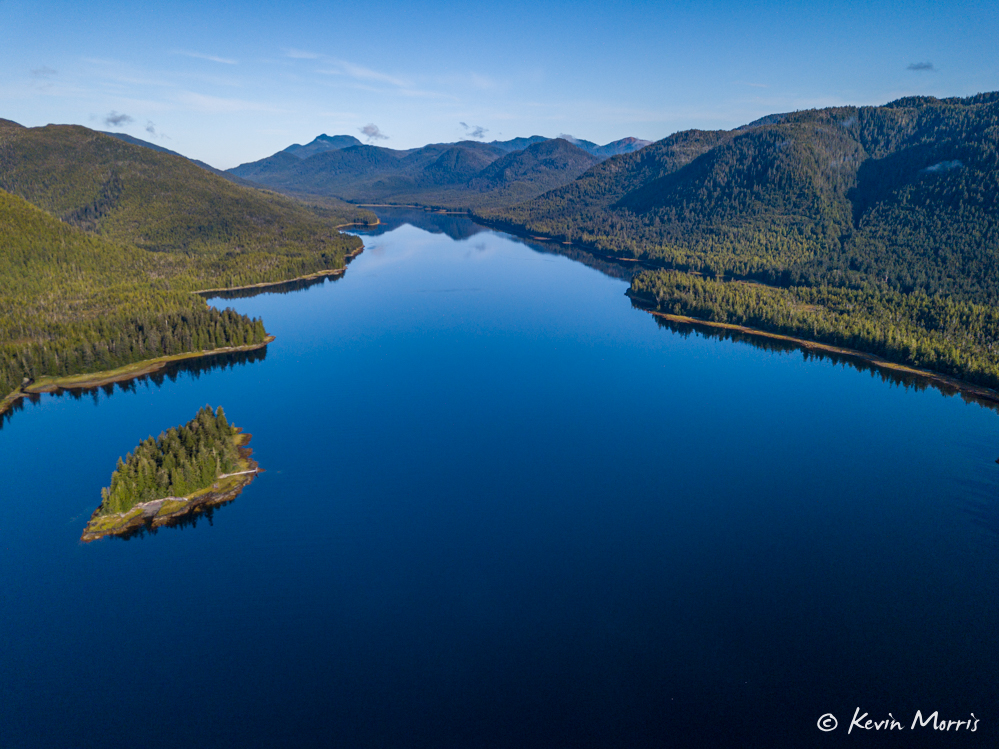
We took the dinghy all the way to the head of the bay this afternoon, checking out the shoreline along the way. We didn’t see any wildlife (well, except for a couple seals and a few eagles), but we did discover that there’s another Forest Service cabin on the other side of the bay near Helm Creek. On our way back, we circled Forss Island again slowly, and as we approached the south tip of the island we heard a sound we hadn’t heard before. Definitely didn’t sound like any bird we’ve heard before. Could it be a mountain goat sound??? We killed the outboard and listened, but only heard it once more as we started the engine back up. After a little Googling back on the boat, we learned that it indeed could have been the sound of a mountain goat (as heard/seen at the end of this video, captured by remote camera/microphone). We haven’t seen it again, but it sounds like it’s still out there!
UPDATE: I mentioned that yesterday after spotting the mountain goat, I sent an email to the Alaska DFG reporting the sighting, in case it was rare (sounds like it was!). I just now got this email back:
Hi Laura
Thanks much for passing along your observation. It is a pretty cool and rare sighting! It is likely that you observed a dispersing individual (typically young animals – 3 yrs old and less). Dispersal is uncommon but can result in animals traveling through atypical habitats in search of suitable habitat in another mtn range. It you were able to send along some pictures, that would be great. Also, do you think Forss Island is connected to the “mainland” at low tide? If not, how far do you think the individual would have had to swim to get to the island?
Thanks!
Kevin White
Wildlife Research Biologist
Division of Wildlife Conservation
Alaska Department of Fish and Game
So I forwarded on the photos I took and the chart screenshots, and answered his questions. Fun!!
September 4, 2021 ANOTHER UPDATE: I got another response from Kevin the research biologist after sending more info:
Thanks much for passing along your excellent photos. Pretty neat observation. Its hard to be positive from a distance, but it looks like it may have been a yearling or 2-yr old male – prime sex and age category for dispersal. Also, thanks for the info about the distance between the island and mainland. It’s pretty unusual for mtn goats to be observed swimming, but they are certainly capable. Definitely a unique observation, and also of scientific interest. Would you mind if I shared your observations and pictures with a few colleagues?
